Are you ready for an incredible story of how BestBuy turned around during the 2008 financial crisis and competed against Amazon? Hold on tight, because it’s a wild ride.
To illustrate how a retail brand can tackle the triple challenges of customer experience, employee engagement, and sustainable transformation, I’m often sharing the story of BestBuy when keynoting. BestBuy was facing tough competition from Amazon and other online retailers and struggling to stay afloat until Hubert Joly took over as CEO and led one of the most successful turnarounds in recent history. In this post, we’ll explore the BestBuy transformation story and how it changed the retail landscape.
2009-2012 Critical Context
Back in 2009, BestBuy had 170,000 employees, 3,889 stores, and brought in a whopping $45 billion in revenue with a net revenue of $1.2 billion in 2011. However, despite still being in the black, the company suffered a significant blow in 2012 when net revenue plummeted to -$1 billion and stock value dipped to $25. It seemed like the end was near until Hubert Joly stepped in as the new CEO in August 2012.
When Hubert Joly took over BestBuy, the company was facing tough times, and layoffs seemed inevitable. However, Joly understood the importance of employee engagement and culture, and he managed to navigate the layoffs while keeping a positive work environment.
Joly made it clear from the beginning that he was not just the CEO, but an “apprentice CEO.” He visited shop floors and talked to employees to gain a better understanding of the company and its culture, and he asked customer-facing employees three simple questions: What works well here? What would you do differently? How can I help you? Despite the difficult financial situation, Joly focused on employee engagement and culture, which paid off big time as BestBuy became one of the most successful turnarounds in recent history.
Within eight weeks into the CEO job, Joly presented his turnaround plan to Wall Street called “Renew Blue”, named after the employees on the ground and their Best Buy blue shirts. With Amazon dominating the retail industry, BestBuy knew that it had to offer something different to stay relevant. The company put customer experience at the forefront of its strategy, becoming one of the most customer-centric retailers in the market.
2012 – 2020 Turnaround
So, how did BestBuy do it? By prioritizing the customer experience and offering something different from Amazon. BestBuy became one of the most customer-centric retailers in the market, addressing customers’ changing needs with initiatives like price matching with Amazon, offering curbside pickup and BOPIS, and reallocating physical stores to accommodate online orders. BestBuy even partnered with Samsung and Apple to create dedicated vendor paid-for corners in shops and doubled down on its Geek Squad service to provide customers with on-site or at-home assistance with installations and repairs.
Joly mentioned four levers that contributed to the exceptional turnaround:
- Firstly, increase revenue by focusing on online business and customer experience
- Secondly, cut costs by reducing non-salary expenses and minimizing the likelihood of product damage. At Best Buy, they sold $10 or $15 billion worth of TVs. Because these TVs were now very tall and thin, they broke a lot of TVs. Best Buy worked with suppliers, the supply chain, and associates in the stores, to reduce the likelihood that a TV will break. As a result, they saved $200M per year. That’s good for the customer and good for the bottom line.
- Thirdly, creatively manage employee benefits like health care to reduce costs. The big cost of benefits is health care. If you can work within your organization to improve the health and well-being of associates – if you are self-insured – you will reduce your healthcare costs.
- Lastly, wisely downsize the business when necessary. At one point at Best Buy, it was decided to close small, stand-alone Best Buy Mobile stores that were essentially mall-based. Costly and not profitable. Instead of laying off employees there, highly specialized in Mobile, they relocated them to Best Buy stores.
Best Buy did constantly pivot to meet their customers’ changing shopping needs, creating a more flexible and efficient operating model, and continued to invest in their employees.
Best Buy’s Strategy to Beat Amazon
“We never obsessed about Amazon; we simply focused on our customers, on improving our customer experience, and on making Best Buy relevant and differentiated. We have consistently been cheaper than Amazon for products like TVs, and our associates are better equipped to offer valuable advice, based on our deep knowledge of consumer electronics and our commitment to impartial advice. We recognized that Amazon was not invincible and that we could coexist and even thrive in the same ecosystem.”
Hubert Joly – former Best Buy CEO in his book “The Heart of Business: Leadership Principles for the Next Era of Capitalism”
In the face of fierce competition from Amazon in the e-commerce industry, Best Buy has countered Amazon’s disrupting the customer value chain by focusing on the factors that matter most to customers: Money, Time, Effort, and one more since the pandemic Risk.

This approach was well analyzed in the best-seller book “Unlocking the Customer Value Chain: How Decoupling Drives Consumer Disruption” where authors Thales Teixeira and Greg Piechota argue that successful modern businesses have to “decouple” the different stages of the customer experience – evaluate, choose, buy, consume – allowing customers to choose which parts of the experience they want to engage with. This means companies have to be flexible and adapt to changing consumer demands, in order to keep up with competitors and keep their customers satisfied. Through case studies of successful companies like Amazon, Uber, and Airbnb, Teixeira and Piechota explore the strategies businesses can use to decouple their customer value chains and stay ahead of the game.
Best Buy was under attack by e-commerce, disrupting the customer value chain after the choosing phase, leaving the most expensive part of the customer value chain (evaluate, choose) to brick-and-mortar retailers while offering a way more rapid, convenient, and cheaper for the buy and consume stages. To beat Amazon, Best Buy has implemented several bold initiatives:
- Vendors pay to have good representation in shops, starting with Samsung and Apple with their dedicated corners.
- Price matching with Amazon has been effective in retaining customers. I experienced it myself when buying an article and checking its price on Amazon before getting to the cashier. Just showing my mobile with the same item cheaper to him, he aligned on the amazon price on the spot and thanked me for my business. This is true empowerment!
- Offering delivery alternatives like curbside pickup and BOPIS (buy online pick-up in-store) to cater to customer delivery experience.
- Reallocating physical stores to accommodate online orders, has been effective in increasing customer satisfaction and loyalty. This was a great decision, as focusing on the customer delivery experience is the most important factor in increasing customer satisfaction and loyalty. The last mile challenge both for delivery or pickup, but more importantly for easy returns, allowed Best Buy to offer a better experience than Amazon.
- Doubling down on Geek Squad, which represented 5% of the revenue in 2018, to offer customers an on-site or at-home service for the installation or repair of their electronics. Amazon cannot match it to this day. And god knows how our homes are becoming increasingly complex with domotics, voice assistants, and smart TVs/apparel!
Funny to see Jeff Bezos and Hubert Joly celebrating the Amazon corner in Best Buy shops, as Fire TV needed the retail experience to sell its product. What a turnaround!
In the words of Hubert Joly, “There are several reasons why we surpassed our goal so quickly, including a growing consumer electronics industry and the evolution of our business to become much more digital. We are constantly pivoting to meet the changing shopping needs of our customers, creating a more flexible and efficient operating model, and we continue to invest in our people.”
This customer-centric approach has paid off with online sales increasing by 242% in Q2 of 2020, representing 53% of total sales.
In addition, Best Buy has remained committed to environmental, social, and governance (ESG) initiatives, receiving a AAA rating from MSCI for its environmental commitment.
“Profit is like oxygen, food, and water for the body; they are not the purpose of life, but without them, there is no life. We need to shift the focus from shareholder value to stakeholder value. A company must have a purpose that transcends making money, a purpose that contributes to society.”
Hubert Joly – former Best Buy CEO in his book “The Heart of Business: Leadership Principles for the Next Era of Capitalism”
BestBuy’s commitment to ESG and stakeholder value differentiation
BestBuy is not just focused on profitability but also on sustainability and responsible business practices, as evidenced by its AAA rating from MSCI for its commitment to environmental, social, and governance (ESG) issues. Revamping the company’s mission statement to “Enriching lives through technology,” has allowed focusing employee engagement, and even to diversify and grow revenue by adding the MEdTech market with medical electronic devices.
BestBuy’s leadership model has also changed, moving away from a focus on shareholder value maximization to creating value for all stakeholders, including customers, employees, shareholders, the community, and the environment. The company’s financial and ESG results are impressive, with over $8B in revenue growth delivered over the past two years, generating $51.8B in FY22 revenue and exceeding their FY25 financial target ahead of schedule. BestBuy’s commitment to ESG is evident in its social, environmental, and financial goals, including CO2 reduction, water consumption, and electronics recycling. The company’s sustainable performance is further evidenced by its recognition as one of the best places to work, one of the world’s most ethical companies, and its inclusion in various sustainability indices. MSCI rating is not the only proof of BestBuy’s sustainable performance over time, see for yourself: 17 years in the best place to work, 8 years in the world’s most ethical companies, 5 years on the CDP A list, 8 years in the FTSE4Good, 11 years in the Dow Jones Sustainability indices.
BestBuy’s example illustrates the importance of omnichannel customer experience transformation, corporate social responsibility, employee engagement, and a change in leadership style for success in a challenging business environment.
As Joly puts it: ‘But the division of business today is very different. This is an expansive view of business and leadership. The mission has changed. It’s not solely shareholder value maximization. It’s providing value to all of the stakeholders. The scope has changed. It’s not just about the shareholders and the customer, it’s also the community, the environment.”
This crisis has provided an opportunity to pursue this noble goal, with the idea that you can do well, economically speaking, by doing good.
And then, the leadership model changed as well. It’s gone from the superhero to this much more purposeful, authentic, genuine, leader that creates an environment for his team or her team to blossom and do good things in the world. So a time of significant change, for sure. The mission of leadership has changed, not only to maximize shareholder value but also to create value for all stakeholders: customers, employees, shareholders, community, and environment. Doing well by doing good!
“Empathetic leaders care deeply about their employees as human beings, not just as resources to be managed. They recognize that their employees’ happiness and well-being are critical to the success of the company. They understand that the purpose of business is not just to make money, but to make a meaningful contribution to society.”
Hubert Joly – former Best Buy CEO in his book “The Heart of Business: Leadership Principles for the Next Era of Capitalism”
In conclusion, BestBuy’s transformation story sets an example for any brand looking to tackle the triple challenges of omnichannel customer experience, employee engagement, and sustainable transformation, while changing the leadership style for success in a very tense context.
The BestBuy turnaround story is an inspiration for all businesses facing tough times. From customer experience to employee engagement to ESG engagement, BestBuy showed that success can be achieved by putting people first. In this blog post, we’ve explored the different elements of BestBuy’s success and how other companies can learn from its approach.

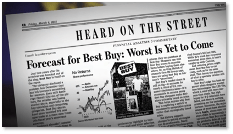

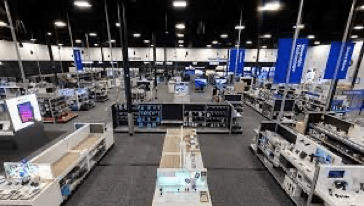

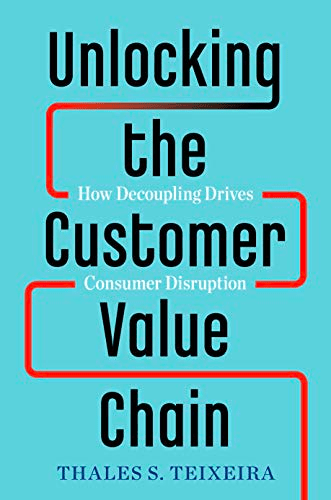

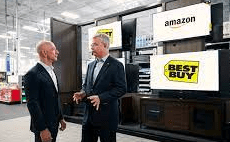


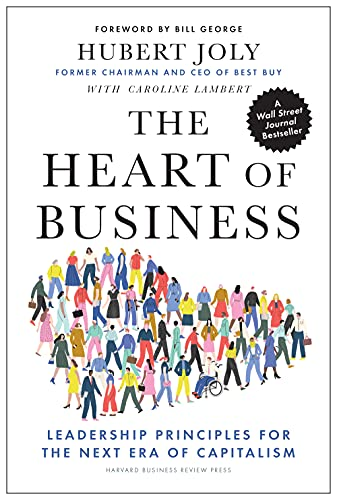
One thought on “BestBuy’s Incredible Turnaround: How Employee Engagement and Customer-Centricity Saved the Day while maintaining ESG commitments”